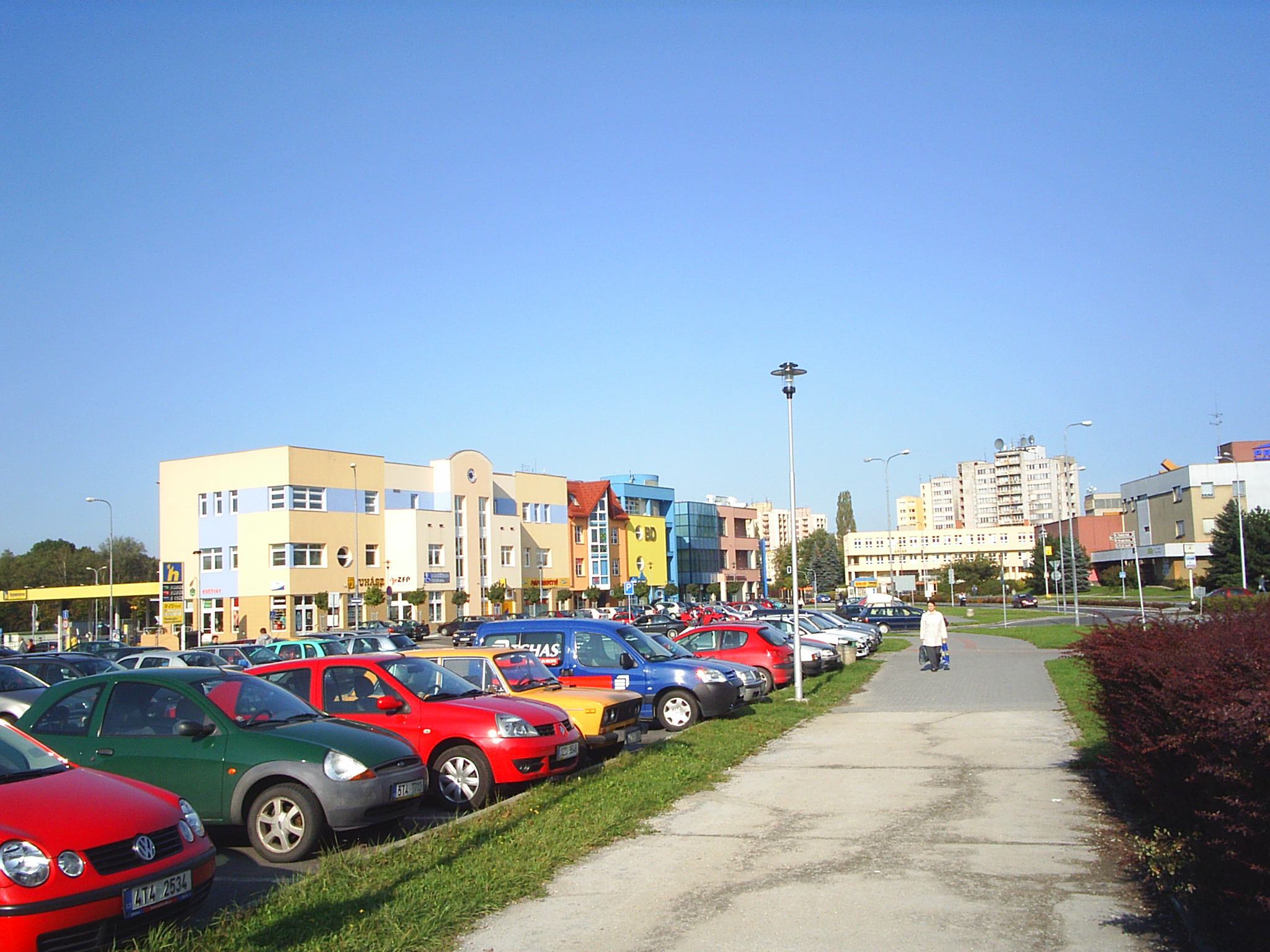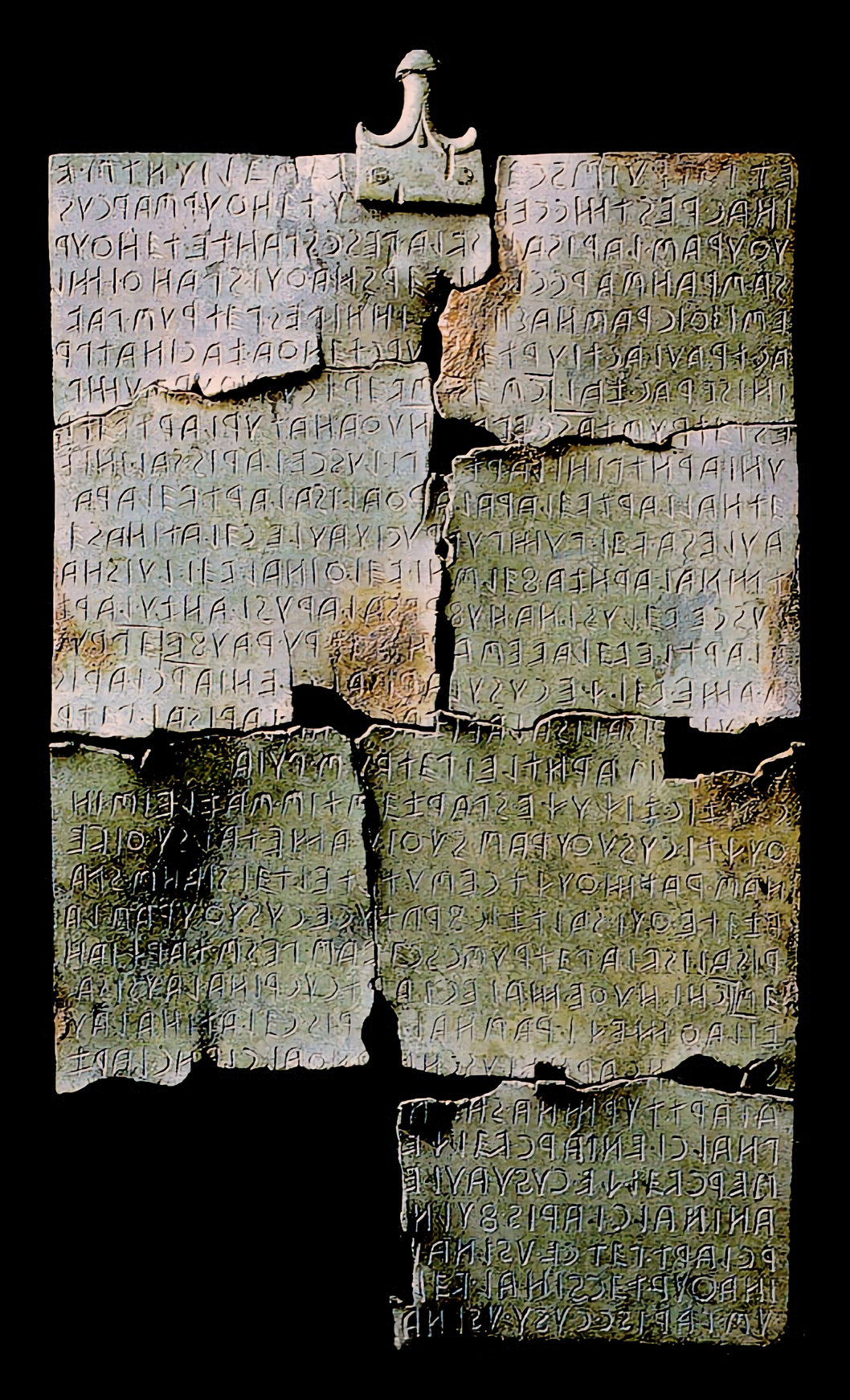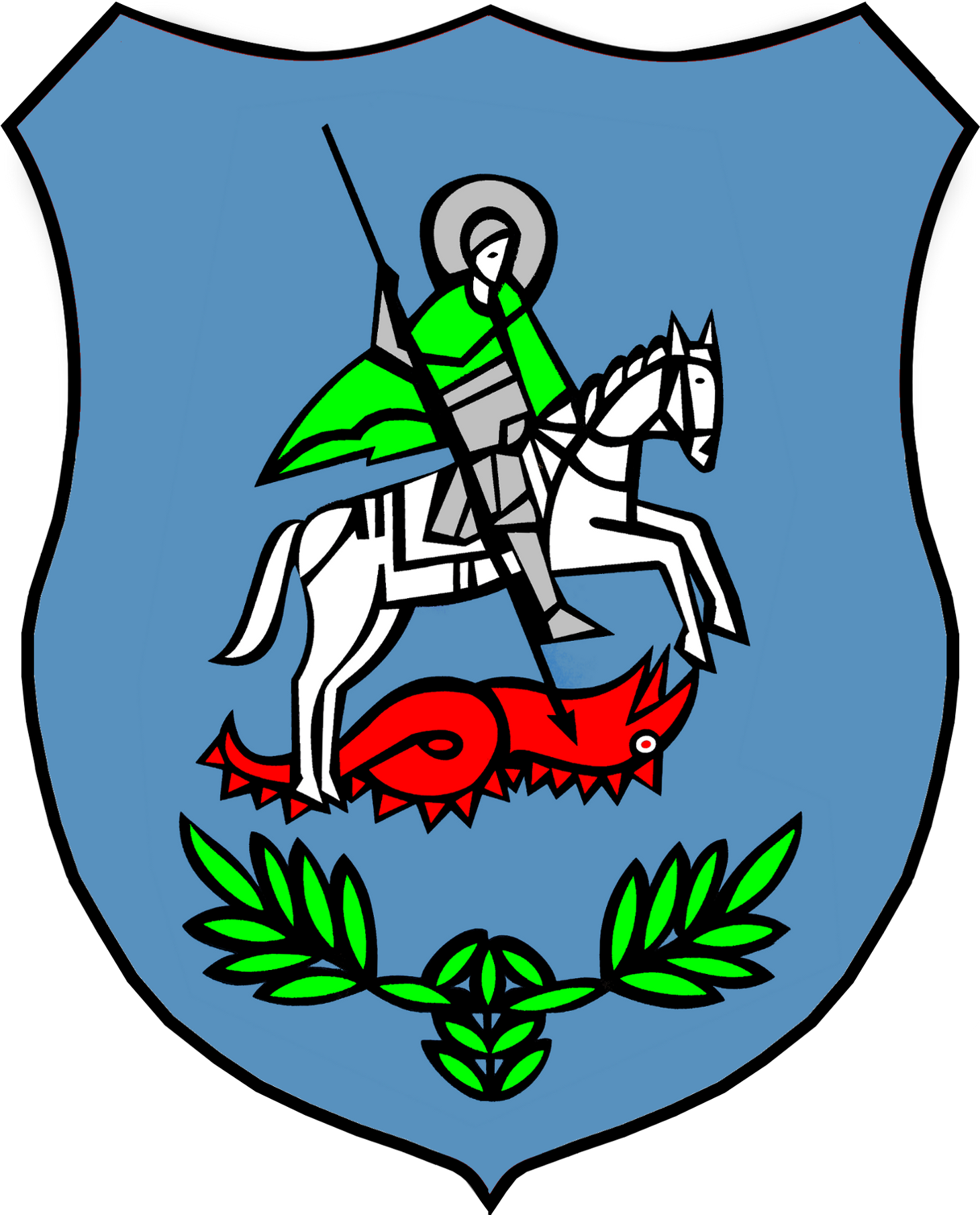|
Gmina Czechowice-Dziedzice
__NOTOC__ Gmina Czechowice-Dziedzice is an urban-rural gmina (administrative district) in Bielsko County, Silesian Voivodeship, in southern Poland. Its seat is the town of Czechowice-Dziedzice, which lies approximately north-west of Bielsko-Biała and south of the regional capital Katowice. The gmina covers an area of , and as of 2019 its total population is 45,451. Villages Apart from the town of Czechowice-Dziedzice, the gmina contains the villages of Bronów, Ligota and Zabrzeg. Neighbouring gminas Gmina Czechowice-Dziedzice is bordered by the city of Bielsko-Biała and by the gminas of Bestwina, Chybie, Goczałkowice-Zdrój, Jasienica and Pszczyna. Twin towns – sister cities Gmina Czechowice-Dziedzice is twinned with: * Cortona, Italy * Hiddenhausen, Germany * Łomża, Poland * Orlová, Czech Republic * Rajec, Slovakia * Slonim, Belarus References {{Authority control Czechowice-Dziedzice Czechowice-Dziedzice (, szl, Czechowice-Dziydzice), previously know ... [...More Info...] [...Related Items...] OR: [Wikipedia] [Google] [Baidu] |
Gmina
The gmina (Polish: , plural ''gminy'' , from German ''Gemeinde'' meaning ''commune'') is the principal unit of the administrative division of Poland, similar to a municipality. , there were 2,477 gminas throughout the country, encompassing over 43,000 villages. 940 gminas include cities and towns, with 302 among them constituting an independent urban gmina ( pl, gmina miejska) consisting solely of a standalone town or one of the 107 cities, the latter governed by a city mayor (''prezydent miasta''). The gmina has been the basic unit of territorial division in Poland since 1974, when it replaced the smaller gromada (cluster). Three or more gminas make up a higher level unit called powiat, except for those holding the status of a city with powiat rights. Each and every powiat has the seat in a city or town, in the latter case either an urban gmina or a part of an urban-rural one. Types There are three types of gmina: #302 urban gmina ( pl, gmina miejska) constituted either by a sta ... [...More Info...] [...Related Items...] OR: [Wikipedia] [Google] [Baidu] |
Gmina Chybie
Gmina Chybie is a rural gmina (administrative district) in Cieszyn County, Silesian Voivodeship, in southern Poland, in the historical region of Cieszyn Silesia. Its seat is the village of Chybie. The gmina covers an area of , and as of 2019 its total population is 9,803. Villages Gmina Chybie contains the villages and settlements of Chybie, Frelichów, Mnich, Zaborze and Zarzecze. Neighbouring gminas Gmina Chybie is bordered by the gminas of Czechowice-Dziedzice, Goczałkowice-Zdrój, Jasienica, Skoczów and Strumień. Notable people * Henryk Machalica (1930–2003), actor *Bogumił Kobiela (1931–1969), theatre actor *Ryszard Staniek (born 1971), footballer Twin towns – sister cities Gmina Chybie is twinned with: * Těrlicko, Czech Republic References External links Gmina Chybie - Official site Chybie is a village and the seat of Gmina Chybie in Cieszyn County, Silesian Voivodeship, southern Poland. It has a population of 3,903 (2012). It lies in the Up ... [...More Info...] [...Related Items...] OR: [Wikipedia] [Google] [Baidu] |
Slonim
Slonim ( be, Сло́нім, russian: Сло́ним, lt, Slanimas, lv, Sloņima, pl, Słonim, yi, סלאָנים, ''Slonim'') is a city in Grodno Region, Belarus, capital of the Slonimski rajon. It is located at the junction of the Ščara and Isa rivers, southeast of Hrodna. The population in 2015 was 49,739. Etymology and historical names Slonim has been known by several versions of its name: Сло́нім ( Belarusian), Słonim (Polish), Сло́ним (Russian). Slonim was first mentioned in chronicles in 1252 as Uslonim and in 1255 as Vslonim. According to one version (which is also considered to be an official one), the name of the city originates from the Slavic word 'zaslona' (a screen), meaning that the city used to be an outpost at the southern border of Grand Duchy of Lithuania. Another version, proposed by Jazep Stabroŭski, states that Slonim is a derivative from 'Užslenimas' in the Lithuanian language simply means 'beyond the valley'. History Middle Ages ... [...More Info...] [...Related Items...] OR: [Wikipedia] [Google] [Baidu] |
Rajec
Rajec ( hu, Rajec; german: Rajetz) is a town in the Žilina District, Žilina Region in northern Slovakia. Etymology Rajec, Rajčianka, Rajčanka are derived from Proto-Slavic appelative ''*rajь'' – a wet, muddy place (modern Slovak ''raj'' – a paradise, "a place with rich vegetation"). History The first written record about Rajec was in 1193 as ''Raich'', in a document issued by King Béla III. The first mention as a town comes from 1397. Geography Rajec lies at an altitude of above sea level and covers an area of . It is situated between Strážovské vrchy and Malá Fatra mountains, in the Rajčanka river valley, around south-south-west of Žilina. Demographics According to the 2001 census, the town had 6,074 inhabitants. 98.86% of inhabitants were Slovaks and 0.68% Czechs. The religious make-up was 92.79% Roman Catholics, 3.42% people with no religious affiliation and 1.89% Lutherans. Sightseeings * Town Hall, renaissance one-floor building available from ... [...More Info...] [...Related Items...] OR: [Wikipedia] [Google] [Baidu] |
Orlová
Orlová (; pl, ; german: Orlau) is a town in Karviná District in the Moravian-Silesian Region of the Czech Republic. It has about 28,000 inhabitants. Administrative parts Orlová is made up of four town parts: Lazy, Lutyně, Město and Poruba. Etymology The name is most probably possessive in origin, derived from the personal Slavic name ''Orel / Orzeł'' (literally "eagle" in English), although it may also be of topographic origins. Geography Orlová is located about east of Ostrava, in the historical region of Cieszyn Silesia. It lies in the Ostrava Basin. The town is situated at the confluence of the streams Rychvaldská Stružka and Petřvaldská Stružka. There are several ponds in the territory. History 12th–18th centuries According to legend, Duke Mieszko IV Tanglefoot went hunting with his pregnant wife Ludmila. As they rested upon a hill, an eagle suddenly took flight, frightening the couple. The eagle dropped his prey, which fell to earth near them. Ludmil ... [...More Info...] [...Related Items...] OR: [Wikipedia] [Google] [Baidu] |
Łomża
Łomża (), in English known as Lomza, is a city in north-eastern Poland, approximately 150 kilometers (90 miles) to the north-east of Warsaw and west of Białystok. It is situated alongside the Narew river as part of the Podlaskie Voivodeship since 1999. Previously, it was the capital of the Łomża Voivodeship from 1975 to 1998. It is the capital of Łomża County and has been the seat of the Roman Catholic Diocese of Łomża since 1925. Łomża is one of the principal economic, educational, and cultural centres of north-eastern Masovia as well as one of the three main cities of Podlaskie Voivodeship (beside Białystok and Suwałki). It lends its name to the protected area of Łomża Landscape Park. The town is also the location of the Łomża Brewery. History Łomża was founded in the 10th century, on the site of the present day village called Stara Łomża (''Old Łomża''). It was first mentioned in official records in the 14th century. Łomża received its municipal r ... [...More Info...] [...Related Items...] OR: [Wikipedia] [Google] [Baidu] |
Hiddenhausen
Hiddenhausen is a municipality in the district of Herford, in North Rhine-Westphalia, Germany. The municipality was formed in 1969 in a reform of Herford (district) by combining the villages of Lippinghausen, Eilshausen, Schweicheln-Bermbeck, Hiddenhausen, Oetinghausen and Sundern. Geography Hiddenhausen is situated approximately 6 km north-west of the centre of Herford and 15 km north-east of Bielefeld. Neighbouring places * Bünde * Kirchlengern * Löhne * Herford * Enger Division of the town Hiddenhausen consists of 6 districts: * Eilshausen (4,909 inhabitants) * Hiddenhausen (2,755 inhabitants) * Lippinghausen (2,892 inhabitants) * Oetinghausen (4,038 inhabitants) * Schweicheln-Bermbeck (5,329 inhabitants) * Sundern (1,578 inhabitants) Twin towns * Loitz (Mecklenburg-Western Pomerania, Germany) * Czechowice-Dziedzice (Poland) * Kungälv (Sweden Sweden, formally the Kingdom of Sweden,The United Nations Group of Experts on Geographical Names states ... [...More Info...] [...Related Items...] OR: [Wikipedia] [Google] [Baidu] |
Cortona
Cortona (, ) is a town and ''comune'' in the province of Arezzo, in Tuscany, Italy. It is the main cultural and artistic centre of the Val di Chiana after Arezzo. Toponymy Cortona is derived from Latin Cortōna, and from Etruscan 𐌂𐌖𐌓𐌕𐌖𐌍 (curtun). This may be related to Indo-European *ghortos meaning "enclosed place" and consequently walled city like Latin hortus, German Garten, Italian orto, English yard, and Slavic grad. The name may also be linked to the Phrygian town of Gordium in Anatolia, although the founding myth for the latter is that it was named after founder, King Gordias. However, the Etruscan language is probably a pre-Indo-European language, and therefore if it was named by the Etruscans, an Indo-European etymology is uncertain. The Umbrian language, by contrast, is an Italic language, so if it was named by them, a link to Indo-European roots would be more likely. George Dennis suggests that it was known by many names "Corytus, Croton, Crotona ... [...More Info...] [...Related Items...] OR: [Wikipedia] [Google] [Baidu] |
Sister City
A sister city or a twin town relationship is a form of legal or social agreement between two geographically and politically distinct localities for the purpose of promoting cultural and commercial ties. While there are early examples of international links between municipalities akin to what are known as sister cities or twin towns today dating back to the 9th century, the modern concept was first established and adopted worldwide during World War II. Origins of the modern concept The modern concept of town twinning has its roots in the Second World War. More specifically, it was inspired by the bombing of Coventry on 14 November 1940, known as the Coventry Blitz. First conceived by the then Mayor of Coventry, Alfred Robert Grindlay, culminating in his renowned telegram to the people of Stalingrad (now Volgograd) in 1942, the idea emerged as a way of establishing solidarity links between cities in allied countries that went through similar devastating events. The comradesh ... [...More Info...] [...Related Items...] OR: [Wikipedia] [Google] [Baidu] |
Gmina Pszczyna
__NOTOC__ Gmina Pszczyna is an urban-rural gmina (administrative district) in Pszczyna County, Silesian Voivodeship, in southern Poland. Its seat is the town of Pszczyna, which lies approximately south of the regional capital Katowice. The gmina covers an area of , and as of 2019 its total population is 52,627. Villages Apart from the town of Pszczyna, Gmina Pszczyna contains the villages and settlements of Brzeźce, Ćwiklice, Czarków, Pszczyna County, Czarków, Jankowice, Pszczyna County, Jankowice, Łąka, Silesian Voivodeship, Łąka, Piasek, Poręba, Pszczyna County, Poręba, Rudołtowice, Studzienice, Silesian Voivodeship, Studzienice, Studzionka, Wisła Mała and Wisła Wielka. Neighbouring gminas Gmina Pszczyna is bordered by the gminas of Gmina Bestwina, Bestwina, Gmina Bojszowy, Bojszowy, Gmina Czechowice-Dziedzice, Czechowice-Dziedzice, Gmina Goczałkowice-Zdrój, Goczałkowice-Zdrój, Gmina Kobiór, Kobiór, Gmina Miedźna, Miedźna, Gmina Pawłowice, Pawłowice, Gmi ... [...More Info...] [...Related Items...] OR: [Wikipedia] [Google] [Baidu] |
Gmina Jasienica
Gmina Jasienica is a rural gmina (administrative district) in Bielsko County, Silesian Voivodeship, in southern Poland, in the historical region of Cieszyn Silesia. Its seat is the village of Jasienica. The gmina covers an area of , and as of 2019 its total population is 24,264. Villages Neighbouring gminas Gmina Jasienica is bordered by the gminas of Bielsko-Biała, Brenna, Chybie, Czechowice-Dziedzice, Jaworze and Skoczów Skoczów (pronounced , german: Skotschau, cs, Skočov) is a town and the seat of Gmina Skoczów in Cieszyn County, Silesian Voivodeship, southern Poland with 14,385 inhabitants (2019). The town lies in the historical region of Cieszyn Silesia. .... Twin towns – sister cities Gmina Jasienica is twinned with: * Petřvald, Czech Republic References External links Official website {{Bielsko County Jasienica Bielsko County Cieszyn Silesia ... [...More Info...] [...Related Items...] OR: [Wikipedia] [Google] [Baidu] |
Gmina Goczałkowice-Zdrój
__NOTOC__ Gmina Goczałkowice-Zdrój is a rural gmina (administrative district) in Pszczyna County, Silesian Voivodeship, in southern Poland. Its seat is the village of Goczałkowice-Zdrój, which lies approximately south-east of Pszczyna and south of the regional capital Katowice. The gmina covers an area of , and as of 2019 its total population is 6,761. Neighbouring gminas Gmina Goczałkowice-Zdrój is bordered by the gminas of Chybie, Czechowice-Dziedzice, Pszczyna and Strumień Strumień (german: Schwarzwasser, cs, Strumeň) is a town and the seat of Gmina Strumień, in Cieszyn County, in the Silesian Voivodeship (province) of southern Poland, on the Vistula River. It is located in the north-eastern part of the hist .... References {{DEFAULTSORT:Gmina Goczalkowice-Zdroj Goczalkowice-Zdroj Gmina Goczalkowice Zdroj ... [...More Info...] [...Related Items...] OR: [Wikipedia] [Google] [Baidu] |
.jpg)


.jpg)
